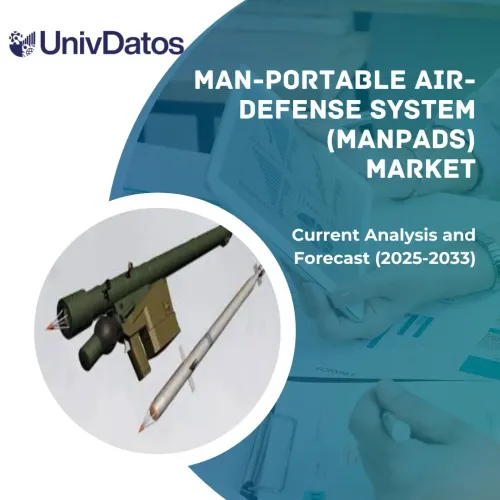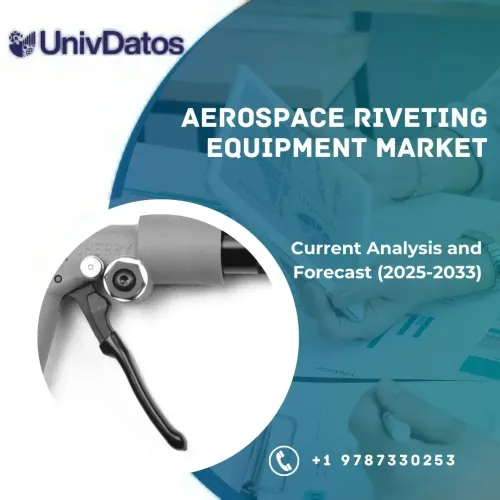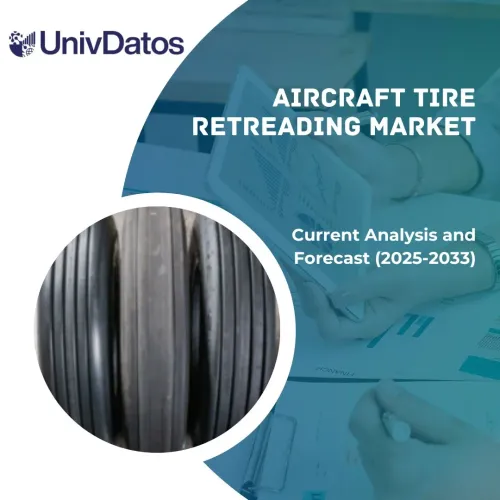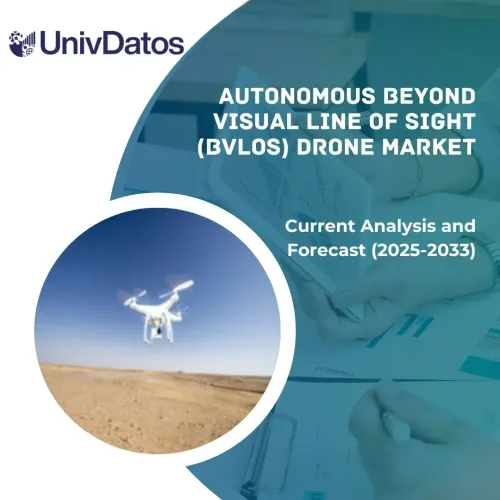- Home
- About Us
- Industry
- Services
- Reading
- Contact Us
Zero Emission Aircraft Engines Market: Current Analysis and Forecast (2022-2030)
Emphasis on Type (Turboprop, Turbofan, Turboshaft, and Piston Engine); Component (Compressor, Turbine, Gearbox, Exhaust System, Fuel System, and Others); and Platform (Fixed Wing Aircraft, Wing Aircraft, and Unmanned Ariel Vehicles); Technology (Conventional and Hybrid); Region/Country.
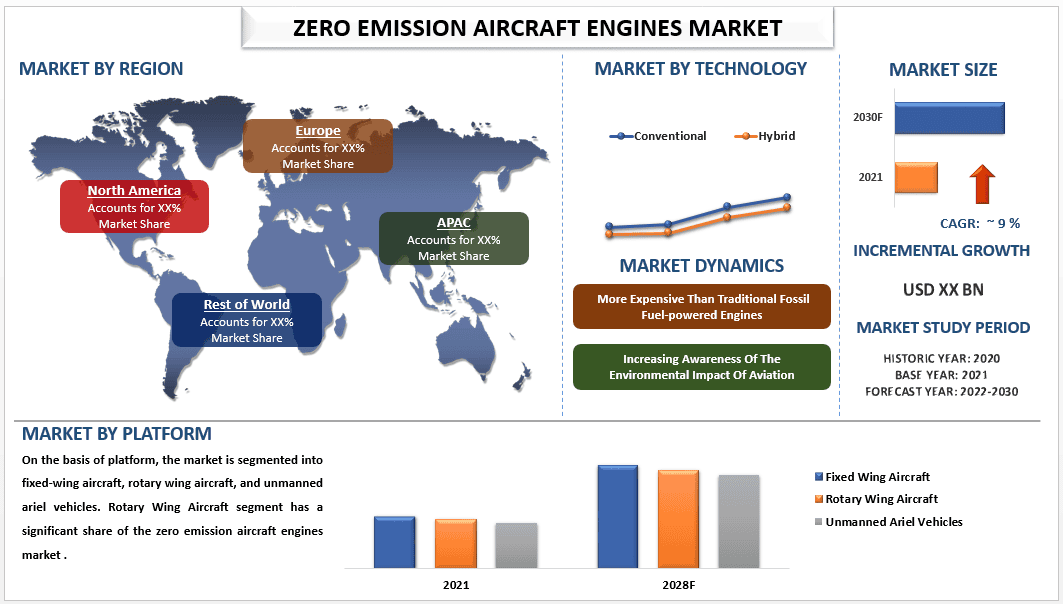
The Zero Emission Aircraft Engines market is a rapidly growing industry that is focused on the development and deployment of aircraft engines that produce zero emissions. The market is driven by a combination of factors, including increasing concerns about the environmental impact of aviation emissions, government regulations and incentives to promote sustainable aviation, and the growing demand for sustainable transportation solutions. The Zero Emission Aircraft Engines market is a rapidly growing industry that is focused on the development and deployment of sustainable aviation technologies. The market is driven by a combination of factors, including increasing concerns about the environmental impact of aviation emissions, government regulations and incentives, and the growing demand for sustainable transportation solutions. The market is expected to continue to grow in the coming years, driven by the increasing availability and affordability of sustainable technologies, and the growing demand for sustainable aviation.
Some of the major players operating in the market include AeroDelft, AIRBUS, BYE AEROSPACE, Eviation Aircraft, HES Energy SystemSs, Joby Aviation, Lilium GmbH, PIPISTREL D.O.O., Wright Electric, and ZeroAvia, Inc. Several M&As along with partnerships have been undertaken by these players to facilitate customers with hi-tech and innovative products/technologies.
Insights Presented in the Report
“Amongst technology, the hybrid segment held significant growth in 2021.”
On the basis of technology, the market is segmented into conventional and hybrid. Hybrid electric propulsion systems are gaining popularity in the Zero Emission Aircraft Engines market due to several reasons. Firstly, they offer a way to reduce fuel consumption and emissions while maintaining or even improving performance. Secondly, hybrid systems are more flexible than pure electric or combustion engines alone, as they can switch between different power sources depending on the operational requirements. This can be particularly useful for aircraft that require a combination of high-speed cruising and low-speed takeoff and landing, as the electric motor can provide the necessary power during these phases.
“Amongst platform, the unmanned ariel vehicles segment held significant growth in 2021”
On the basis of platform, the market is segmented into fixed-wing aircraft, rotary wing aircraft, and unmanned ariel vehicles. Among these, unmanned aerial vehicles (UAVs), also known as drones, have significant growth potential in the Zero Emission Aircraft Engines market due to drones are becoming increasingly popular for a variety of applications, including aerial photography, delivery services, and inspection and monitoring tasks. As demand for these services grows, the need for more efficient and environmentally friendly drone technology will also increase. Moreover, drones can be particularly suited to hybrid electric propulsion systems, as they often require high power outputs for short bursts of flight, followed by periods of hovering or low-speed flight. This type of operation can be well-matched to the characteristics of hybrid systems, which can provide the necessary power when needed while also maximizing efficiency.
Zero Emission Aircraft Engines Market Report Coverage
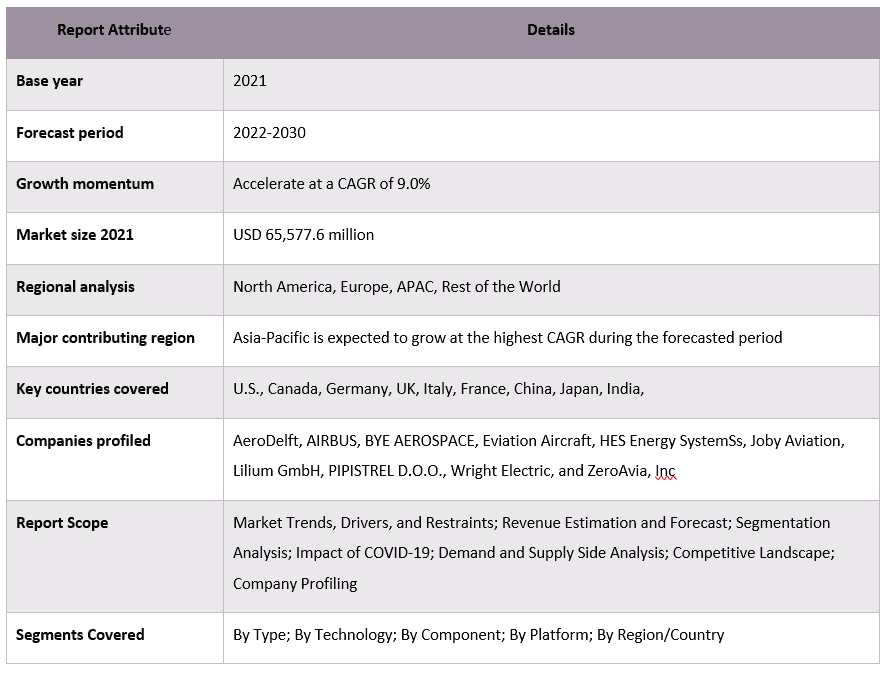
“Asia-Pacific is expected to grow at the highest CAGR during the forecasted period”
The Asia Pacific region is expected to have significant growth in the zero emission aircraft engines market due to several factors. Firstly, the region has a large and rapidly growing aviation industry, which is expected to drive demand for sustainable aviation technologies. Additionally, the region is home to several major players in the aerospace industry, including Airbus and Boeing, which are investing in the development and deployment of zero emission aircraft engines. Furthermore, the region has a high level of environmental awareness and concern about the impact of aviation emissions on the environment. This has led to increased interest in sustainable aviation technologies, including zero emission aircraft engines, and government initiatives to promote the development and deployment of these technologies. In addition, the Asia Pacific region has a well-established supply chain and infrastructure for the aerospace industry, which includes suppliers of components and materials, as well as maintenance and repair facilities. This makes it easier for manufacturers to develop and deploy zero emission aircraft engines in the region. Overall, the combination of a rapidly growing aviation industry, a large market for commercial and military aircraft, a high level of environmental concern, and a well-established supply chain and infrastructure makes the Asia Pacific region an attractive market for zero emission aircraft engines.
Reasons to buy this report:
- The study includes market sizing and forecasting analysis validated by authenticated key industry experts.
- The report presents a quick review of overall industry performance at one glance.
- The report covers an in-depth analysis of prominent industry peers with a primary focus on key business financials, product portfolios, expansion strategies, and recent developments.
- Detailed examination of drivers, restraints, key trends, and opportunities prevailing in the industry.
- The study comprehensively covers the market across different segments.
- Deep dive regional level analysis of the industry.
Customization Options:
The global zero emission aircraft engines market can further be customized as per the requirement or any other market segment. Besides this, UMI understands that you may have your own business needs, hence feel free to connect with us to get a report that completely suits your requirements.
Table of Content
Research Methodology for the Zero Emission Aircraft Engines Market Analysis (2022-2030)
Analyzing the historical market, estimating the current market, and forecasting the future market of the global zero emission aircraft engines market were the three major steps undertaken to create and analyze the adoption of zero emission aircraft engines in major regions globally. Exhaustive secondary research was conducted to collect the historical market numbers and estimate the current market size. Secondly, to validate these insights, numerous findings and assumptions were taken into consideration. Moreover, exhaustive primary interviews were also conducted, with industry experts across the value chain of the global zero emission aircraft engines market. Post assumption and validation of market numbers through primary interviews, we employed a top-down/bottom-up approach to forecasting the complete market size. Thereafter, market breakdown and data triangulation methods were adopted to estimate and analyze the market size of segments and sub-segments of the industry pertains to. Detailed methodology is explained below:
Analysis of Historical Market Size
Step 1: In-Depth Study of Secondary Sources:
Detail secondary study was conducted to obtain the historical market size of the zero emission aircraft engines market through company internal sources such as annual reports & financial statements, performance presentations, press releases, etc., and external sources including journals, news & articles, government publications, competitor publications, sector reports, third-party database, and other credible publications.
Step 2: Market Segmentation:
After obtaining the historical market size of the zero emission aircraft engines market, we conducted a detailed secondary analysis to gather historical market insights and share for different segments & sub-segments for major regions. Major segments are included in the report as type, component, platform and technology. Further country-level analyses were conducted to evaluate the overall adoption of testing models in that region.
Step 3: Factor Analysis:
After acquiring the historical market size of different segments and sub-segments, we conducted a detailed factor analysis to estimate the current market size of the zero emission aircraft engines market. Further, we conducted factor analysis using dependent and independent variables such as product, technology, and end-users of the zero emission aircraft engines market. A thorough analysis was conducted for demand and supply-side scenarios considering top partnerships, mergers and acquisitions, business expansion, and product launches in the zero emission aircraft engines market sector across the globe.
Current Market Size Estimate & Forecast
Current Market Sizing: Based on actionable insights from the above 3 steps, we arrived at the current market size, key players in the global zero emission aircraft engines market, and market shares of the segments. All the required percentage shares split, and market breakdowns were determined using the above-mentioned secondary approach and were verified through primary interviews.
Estimation & Forecasting: For market estimation and forecast, weights were assigned to different factors including drivers & trends, restraints, and opportunities available for the stakeholders. After analyzing these factors, relevant forecasting techniques i.e., the top-down/bottom-up approach were applied to arrive at the market forecast for 2030 for different segments and sub-segments across the major markets globally. The research methodology adopted to estimate the market size encompasses:
- The industry’s market size, in terms of revenue (USD) and the adoption rate of the zero emission aircraft engines market across the major markets domestically
- All percentage shares, splits, and breakdowns of market segments and sub-segments
- Key players in the global zero emission aircraft engines market in terms of products offered. Also, the growth strategies adopted by these players to compete in the fast-growing market
Market Size and Share Validation
Primary Research: In-depth interviews were conducted with the Key Opinion Leaders (KOLs) including Top Level Executives (CXO/VPs, Sales Head, Marketing Head, Operational Head, Regional Head, Country Head, etc.) across major regions. Primary research findings were then summarized, and statistical analysis was performed to prove the stated hypothesis. Inputs from primary research were consolidated with secondary findings, hence turning information into actionable insights.
Split of Primary Participants in Different Regions
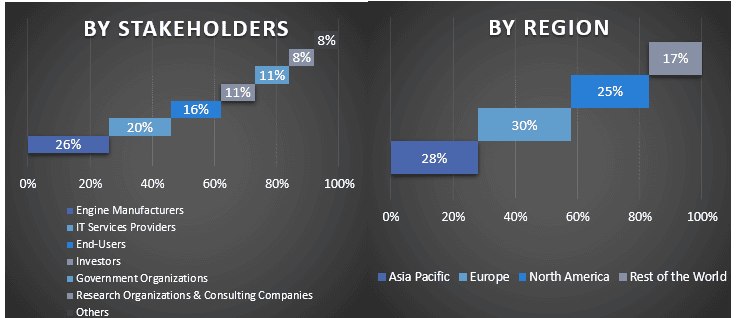
Market Engineering
The data triangulation technique was employed to complete the overall market estimation and to arrive at precise statistical numbers for each segment and sub-segment of the global zero emission aircraft engines market. data was split into several segments & sub-segments post studying various parameters and trends in the areas of the product, technology, and end-users in the global zero emission aircraft engines market.
The main objective of the Global Zero Emission Aircraft Engines Market Study
The current & future market trends of the global zero emission aircraft engines market were pinpointed in the study. Investors can gain strategic insights to base their discretion for investments on the qualitative and quantitative analysis performed in the study. Current and future market trends determined the overall attractiveness of the market at a regional level, providing a platform for the industrial participant to exploit the untapped market to benefit from a first-mover advantage. Other quantitative goals of the studies include:
- Analyze the current and forecast market size of the zero emission aircraft engines market in terms of value (USD). Also, analyze the current and forecast market size of different segments and sub-segments
- Segments in the study include areas of the type, component, platform and technology.
- Define and analysis of the regulatory framework for the zero emission aircraft engines industry
- Analyze the value chain involved with the presence of various intermediaries, along with analyzing customer and competitor behaviors of the industry.
- Analyze the current and forecast market size of the zero emission aircraft engines market for the major region.
- Major countries of regions studied in the report include Asia Pacific, Europe, North America, and the Rest of the World
- Company profiles of the zero emission aircraft engines market and the growth strategies adopted by the market players to sustain in the fast-growing market.
- Deep dive regional level analysis of the industry
Related Reports
Customers who bought this item also bought





